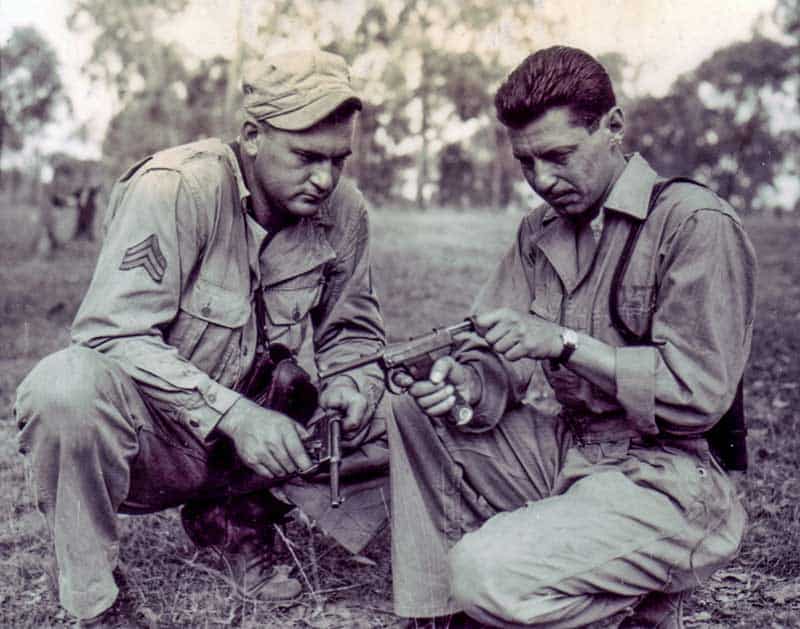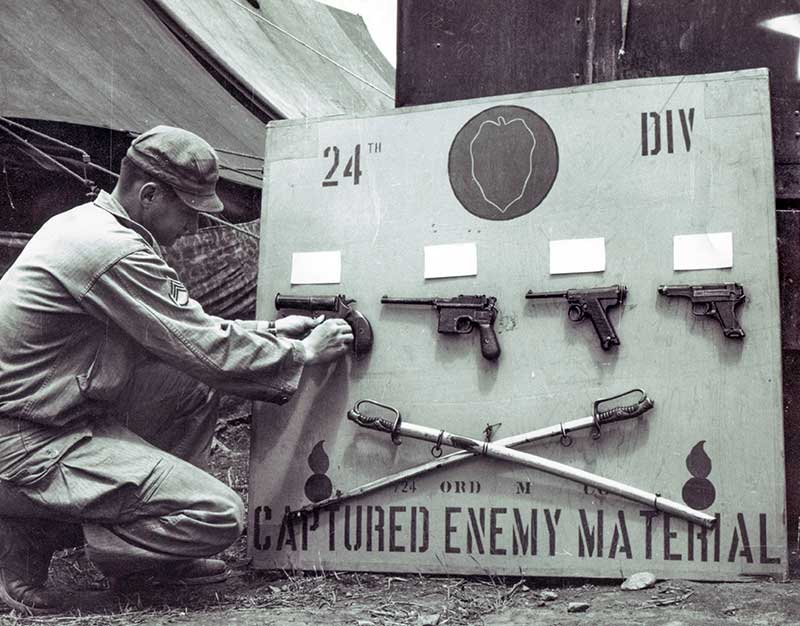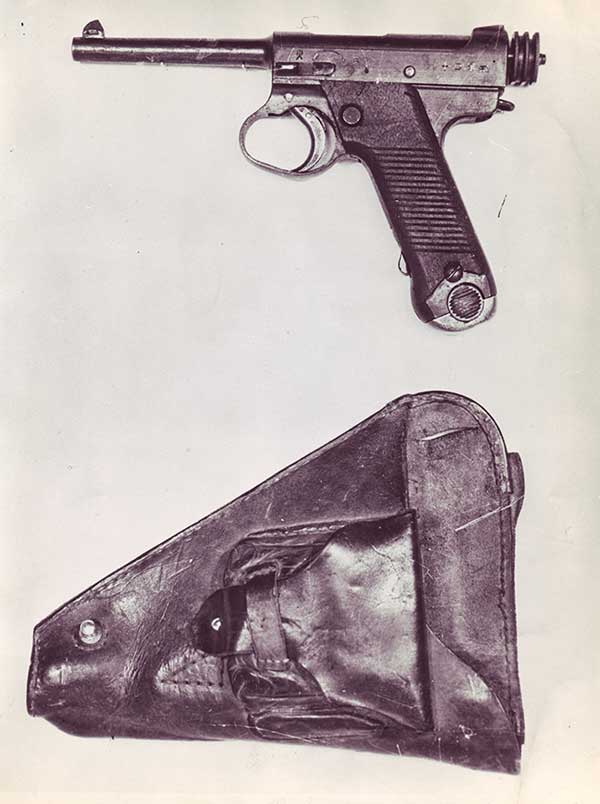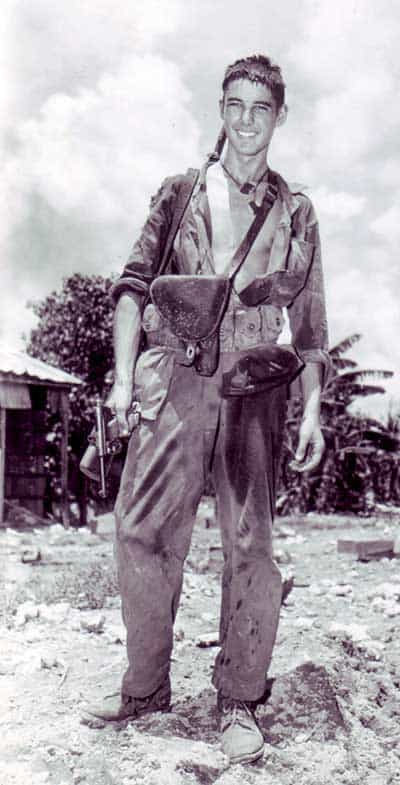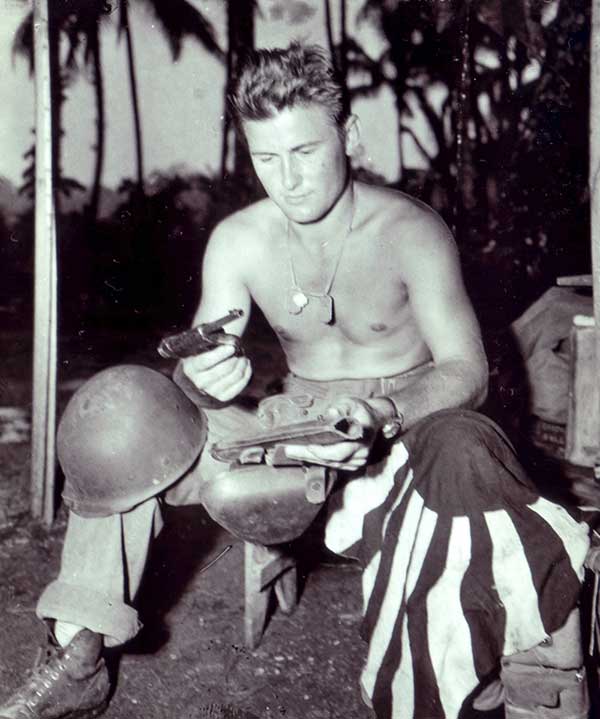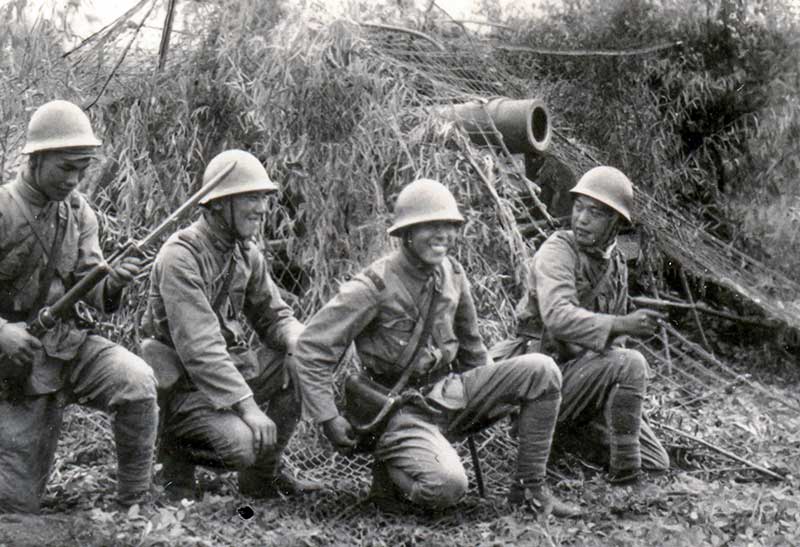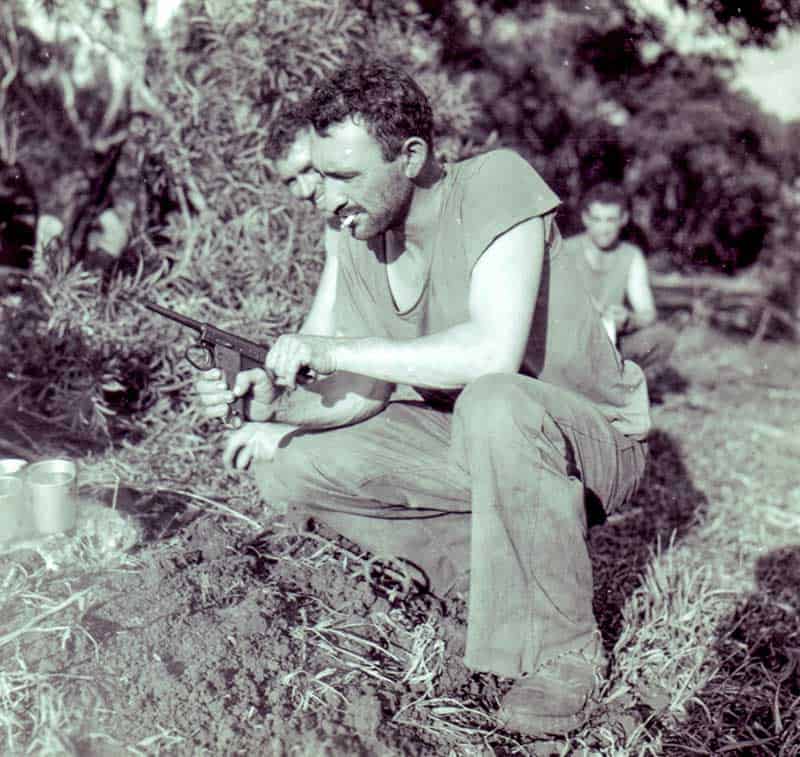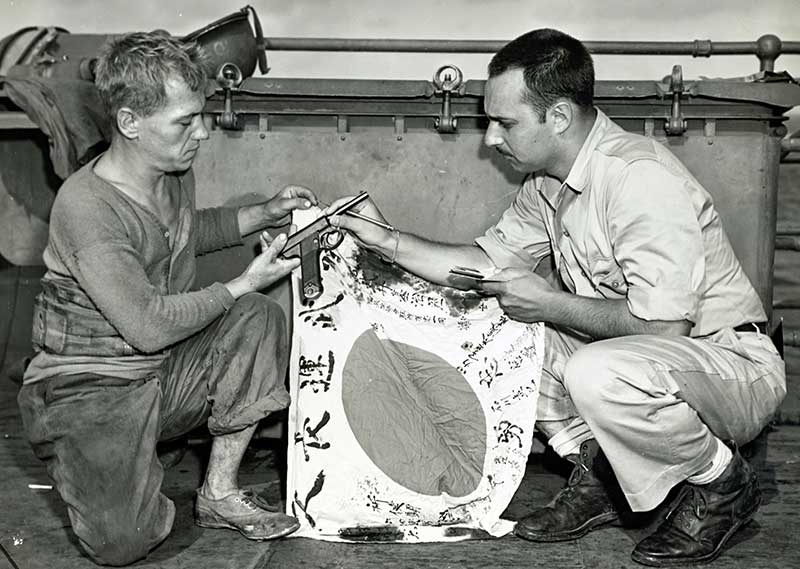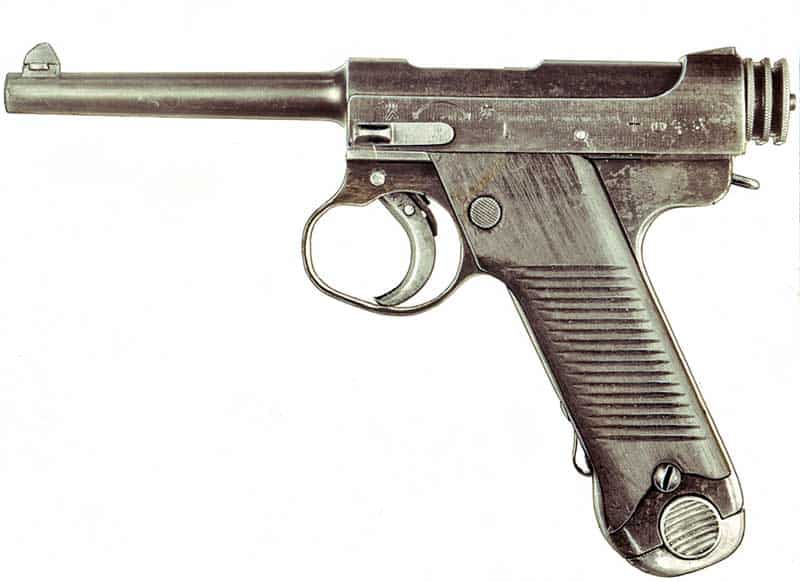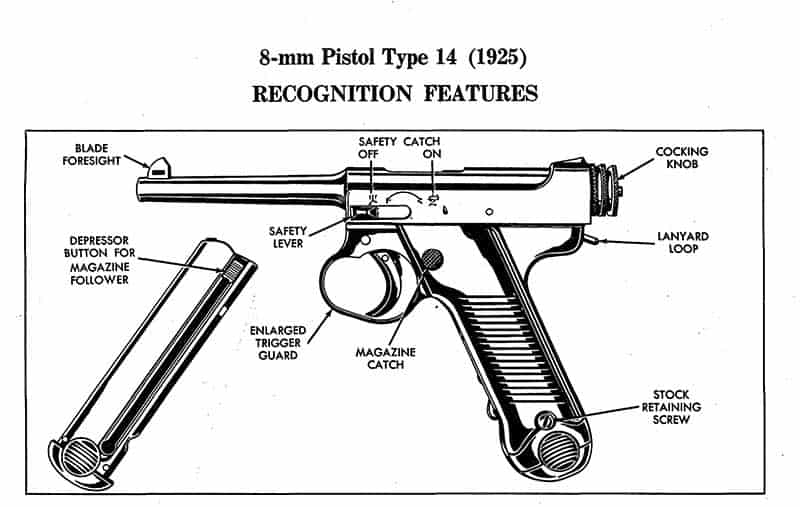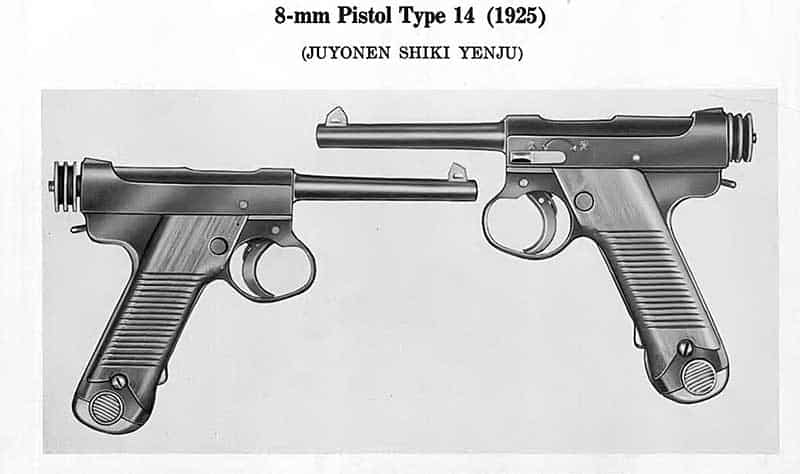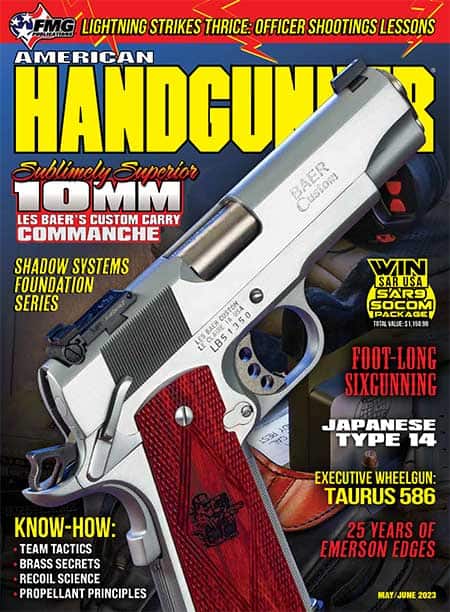Property of the Emperor
The Japanese Type 14 Pistol
Type 14 Pistol Stats
Ammunition: 8mm ball semi-rimmed, bottlenecked case
Weight: 2.2 lbs. loaded
Length: 9″ long with a 4.5″ barrel
Feed: 8-round detachable magazine
Sights: V-Notch sights, non-adjustable
Muzzle Velocity: 960 FPS
Effective Range: 50 yards
Holster: Heavy leather or rubberized canvas featuring a flap with a safety catch and a pocket for reserve ammunition. A lanyard could be attached at the rear of the receiver.
Immediately after World War I, Japan’s military began to expand. The desire to expand the Empire required an influx of modern weapons. Handguns like the Type 26 revolver and the early Type Nambu (“Grandpa Nambu”) semi-automatic pistol were not up to modern military standards and were not fit for mass production. The Nambu design team was tasked with creating a new sidearm for Japan’s expanding officer corps and in 1927 the “Type 14” was adopted to correspond with the 14th year of Emperor Taisho’s reign.
The new pistol simplified the earlier Nambu design by replacing the grip safety with a thumb safety and modifying the bolt and cocking knob to a more basic style. A simple, fixed rear sight replaced the complex graduated sight, while a utilitarian lanyard ring was attached to the rear of the receiver. Experience in Manchuria led to the development of an enlarged trigger guard to accommodate a gloved hand. Ultimately, the Type 14 would become the most common of Japanese combat pistols during WWII, with more than 280,000 made by six manufacturers.
Early models of the Type 14 maintained relatively good levels of workmanship and quality. However, as WWII progressed and strategic materials became scarce, shortcuts in production became necessary. Consequently, fit and finish of the pistols suffered and U.S. Ordnance described the workmanship on wartime Model 14s as “usually poor.” With their horizontally grooved wooden grips, the pistols first saw fewer grooves and then none as the war continued. By the war’s end, holsters degraded from quality leather to rubberized canvas.
Lukewarm Reviews
The 1945 edition of Guns of the World describes the Type 14:
“It will be noted that while the exterior appearance somewhat resembles the German Luger, the actual locking design is more like the Italian Glisenti and the German Mauser.
In this pistol, the bolt stays back when the last cartridge has been fired. However, when the magazine is withdrawn, the bolt flies forward. When a new magazine is inserted, the bolt must be drawn back and released manually to load the chamber. A magazine safety is provided, which prevents the weapon from being fired when the magazine is withdrawn. While the design of this pistol is reasonably efficient, its manufacture does not measure up to our standards of weapons production requirements.”
Lt. Colonel John B. George assessed the Type 14 in his excellent book Shots Fired in Anger: A Rifleman’s View of the War in the Pacific, 1942–1945.
“This entire ignition system is rather haywire of design, having many of the faults of the Luger, with a few more of its own thrown in for good measure. Springs are not strong enough, sear engagement surface is not great enough, and the whole works makes for a springy and cushioned trigger let-off, which most American shooters would despise. In operation, the weapon does not compare with the Colt 45 in functioning reliability or, as far as I am concerned, in accuracy. It is more sensitive to grit and dirt, and its maintenance is more of a problem than that of our own handgun. Its chief advantages are not military ones at all. They are neat in appearance, nice ‘feel,’ good finish and fit, all of which make it an attractive and desirable souvenir. The leather holster furnished with it also adds much to its eye appeal.
As a souvenir or a collection piece, it’s nice to have. Even its little bottlenecked cartridges — with the crimp secured by three little punch marks — look very pretty. For military use, though, I wouldn’t give it hell room either.”
GI Souvenirs
Much like the German P08 Luger pistol in Europe, the Japanese Type 14 was a highly desirable war trophy for U.S. troops in the Pacific Theatre. Combat troops, living the dangerous and filthy life at the front, had hard-won access to the souvenirs. The “rear-echelon commandos,” particularly the officers, had the money.
Colonel George relates a story about a trophy pistol transaction: “Before we moved out of our beach camp, we were visited by a group of souvenir-hunting officers from the Navy, and rumor had it that the sergeant sold the little gun, complete with its natty little belt holster, for $200. According to the story, he didn’t really want the $200 — he had merely asked for two bottles of whiskey or $200. The Navy chap apparently felt that he could do better elsewhere with the booze because he shelled out the $200 and let the sergeant go thirsty.”
The Emperor’s Pistol
Japanese officers were obliged to purchase their own sidearms, and by the late 1930s, the standard-issue Type 14 pistol sold for about 80 yen at Japanese Army stores. Despite purchasing the pistols with their own funds, most Japanese officers still considered their Type 14 to be the property of their emperor. Consequently, when Japan surrendered, many of these pistols were thrown into the ocean or the nearest river, disassembled, hidden, or buried. Those that remain are still prized by collectors.
Some Type 14 pistols soldiered on after WWII, particularly in the hands of the Chinese Communist Army during the Korean War. The Chinese captured a large amount of Japanese equipment at the end of WWII and a number of Type 14s were issued as sidearms for officers in the Chinese Army.


